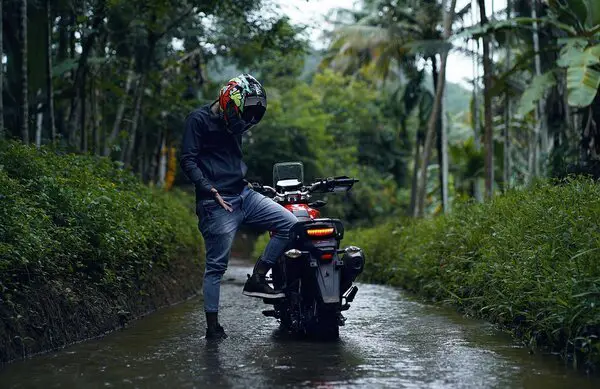Flooded your motorcycle engine? How many times do such things happen, and at the worst times? Though a flooded engine is not very enjoyable, you can comfortably handle it on your own in your garage using some simple tools. Such an engine is probably one of the most common issues that riders have to deal with. Before fixing, identify where you are dealing with a flooded engine, or your bikes are facing a different issue. So, you might be thinking, “how do I fix a flooded motorcycle engine?”
The first thing to do here is waiting for at least 15 minutes for the gas dissipation in your engine to occur. This will make your engine start again in most cases.
But if that doesn’t happen, you need to go through this brief guide to sort this problem out on your own, so keep reading.
What Causes A Flooded Engine?
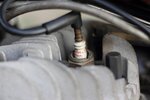
Before we get to the point of answering the question, “how do I fix a flooded motorcycle engine?” It would be better to know a few causes behind this issue. It is important to understand how a motorcycle engine gets flooded.
The engine floods when the fuel is running properly within the cylinder, but there is not much spark for the ignition. Therefore, the fuel injector or the carburetor keeps pushing more fuel without any spark for ignition. This injected fuel stays within the cylinder and fills it up, which causes the flood.
The build-up reduces the air-to-fuel ratio that is ideal for the spark to occur. Therefore, there is no room left for the air to enter and start the adequate combination for initiating the combustion process.
Your bike’s engine floods when the faulty spark plugs don’t cause the spark for the combustion process. These spark plugs are pretty simple components, but it creates a problem if something goes wrong.
The ignition coil can be another problem that is causing no-spark. If this ignition coil is not functioning properly, it won’t transfer the appropriate signal to the spark plug wires. If these wires are cracked or worn out, the spark plug will not get any charge or spark at all. These are some of the most common reasons your engine is not starting up.
How To Prevent A Motorcycle Engine From Flooding?

So, how to prevent this situation? Before we answer the question of “how do I fix a flooded motorcycle engine?” it is essential that you know how to avoid this entire situation. Dealing with a flooded engine is not very exciting, and you might not want to deal with this issue ever again. So, to avoid it, there are a few steps you must consider.
The primary reason why your engine floods are the malfunctioning of those spark plugs. Hence, their maintenance is the key here. Closely examine your spark plugs at least once a year and replace them if they are less functional.
Many people don’t even understand the gap that is there at the end of the spark plug. This gap is the distance between the electrode and the plug itself. It looks like a hook in a layman’s language. Many people buy a plug and insert it in the hole and think that everything is okay. It might work for a while, but it will not work in the long run.
When buying a plug, you have to set the gap at the end in an appropriate way. There is a gap tool available for this, and you can find it on any auto parts store. You will have to consult your owner’s manual about the right gap for each of the plugs in your bike.
With the help of that tool, you can make adequate changes. These plugs don’t come with the right gap in stock for each bike. So, regular spark plug maintenance is a must, plus you need to check the conditions of your spark plug wires.
How Do I Fix A Flooded Motorcycle Engine? – Step-by-Step
Thinking about fixing your flooded bike engine? Well, it’s time to find the answer to that question “how do I fix a flooded motorcycle engine?” We will provide you with a step-by-step procedure to follow and take care of this problem on your own.
As we have mentioned above, the engine floods due to excess gasoline entering into the engine at the same time. The best way to resolve this problem on its own is to wait for about 30 to 45 minutes and allow the fuel to evaporate from the engine’s internal parts.
But what if you don’t have time to wait for long? Well, then there are some ways to get things right in less than half an hour.
Is it flooded?
Before you get to work, you need to find out it is flooded or dealing with something else. You might be dealing with gasoline issues or ignition problems as well.
Inconsistent and poor cylinder compression can initiate from inadequate ignition timing, failing ignition coils, mistimed engine valves, or spark plug.
Non-starting conditions are another issue as your engine floods too much if fuel accumulates. It coats all the cylinder walls and dampens the spark plug electrodes. It means the spark plug becomes too wet for the ignition.
Therefore, you need to make sure the problem is not prevailing in the electrical system. In addition to the spark plug, you will also notice the gas smell. Both these indications mean you have a flooded engine.
Step 1 – Drying spark plug
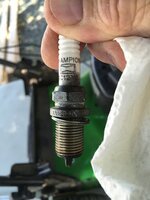
You need to check with the spark plug of your bike and make sure it is completely dry. With the help of a spark plug wrench, remove the plugs by turning them anticlockwise. Just be careful not to be forceful and end up breaking the top of the plug. Dry it off entirely if it is wet, and you can also run some air over it. Replace the plug if it does not produce enough spark.
Step 2 – Draining the excess
The next step is to turn your bike’s gas valve and choke off on the carburetor. Stand on one side of your bike (the one with a carburetor). Lay your bike down a bit as it will drain any excess fuel collected in the overflow tubes. You can wipe the fuel that comes out using some rags.
Step 3 – Dry the Compression Cylinders
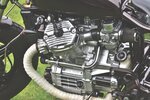
Now kick start your bike with your plug removed. You will have to kick start it about 10 times for drying up your cylinders entirely. If your bike doesn’t feature a kickstart, you will have to bump, start or push-start the engine. You can do so by physically pushing your bike abruptly to force its engine directly into a gear. You might need a bit of a helping hand for this.
Step 4 – Reinstalling the spark plugs
Now, you need to reinstall the spark plugs you had removed previously. If they are too worn out, you need to replace them with new plugs. You have to be certain about the gap right at the end. Keep this gap according to the specifications given in your bike’s owner’s manual.
Step 5 – Starting the bike

Make sure you have your fuel turned off right at this moment, along with the choke. Now kick start the motor, and as soon as you start, it turns the fan on. If it was a flooded engine, turning the gas on as soon as you kick start the engine will solve the problem.
Step 6 – Checking the cylinders
Apart from the engine, fuel might build up within the bike’s cylinders as well. After checking this, you will have to pull your plug and check if any fuel is present within the oil. If you find some traces of oil, you need to change that too.
With flooding, small debris will get into the carburetor, and leave the float needles open and cause a leak. You can clean the carburetor and install the inline fuel filter to prevent it from happening again. Don’t run your bike if it has gasoline in its oil; else, it will destroy your engine.
How Do You Unflood a Fuel-Injected Motorcycle?
Can fuel-injected engines be unflooded? Well, for unflooding them, you only have one option. You have to drain the oil and gas mixture and refill the engine with fresh oil.
If you have managed to contaminate it less (oil and fuel mix), it will take some time to dry. Allow it to dry, and then start your engine. It will take many hours to dry if it’s cold outside, so you better be prepared for that.
However, handling fuel-injected engines are much easier to handle than conventional engines. In most cases, you will be able to resolve the issue of your engine pretty comfortably.
How Do You Unflood a Carburetor?
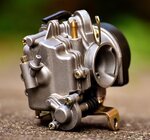
And what about a flooded carburetor? Well, there’s a traditional remedy of unflooding your carburetor. Steadily hold the throttle fully open and carry on cranking your engine. It allows a maximum flow of air right through your engine. It will flush out any overly rich-in-fuel texture right out of the exhaust, and you will have a clear carburetor.
But before you do that, make sure you tilt your bike to one side and allow all the fuel to come out of the carburetor on its own. After that, you can crank your engine and put it to full throttle.
FAQ
Will a flooded engine fix itself?
A flooded engine can fix itself on its own in most cases, but you will have to wait for at least half an hour so the fuel can evaporate adequately. But make sure your bike is well-maintained; otherwise, it can take hours to fix itself because of debris present inside the fuel.
What happens if water gets into the exhaust?
Your engine will stop as there is no way for the gas to go out of the system. You only need to accelerate for a few seconds to get your exhaust clear from the water.
Conclusion
So, did you get the answer to your question, “how do I fix a flooded motorcycle engine”“? In most cases, the engine will be able to fix the problem on its own. But you need to make sure that your bike is in top condition. The fixing process can take hours or even longer and might not resolve the issue entirely.

